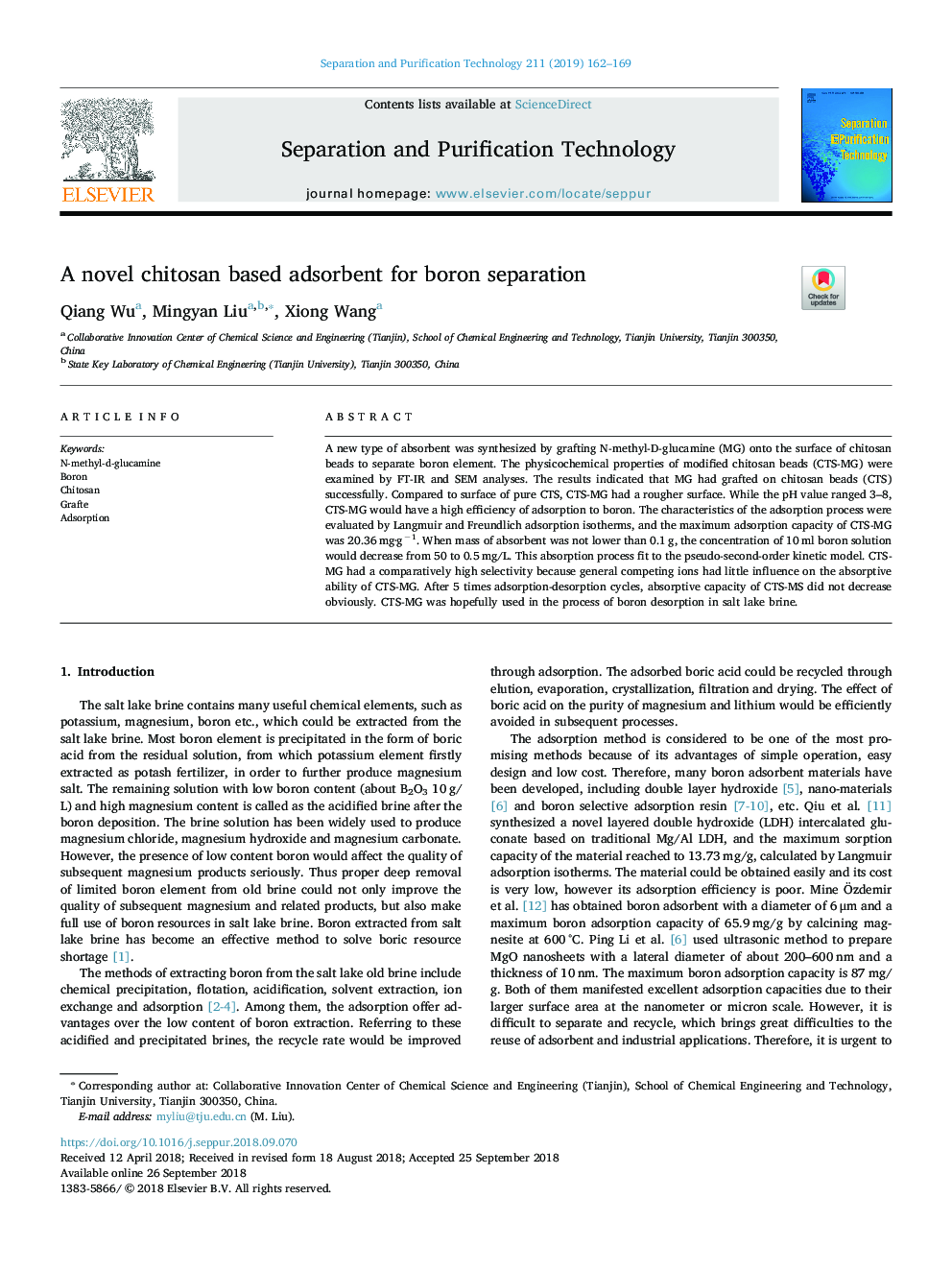| Article ID | Journal | Published Year | Pages | File Type |
|---|---|---|---|---|
| 11023718 | Separation and Purification Technology | 2019 | 8 Pages |
Abstract
A new type of absorbent was synthesized by grafting N-methyl-D-glucamine (MG) onto the surface of chitosan beads to separate boron element. The physicochemical properties of modified chitosan beads (CTS-MG) were examined by FT-IR and SEM analyses. The results indicated that MG had grafted on chitosan beads (CTS) successfully. Compared to surface of pure CTS, CTS-MG had a rougher surface. While the pH value ranged 3-8, CTS-MG would have a high efficiency of adsorption to boron. The characteristics of the adsorption process were evaluated by Langmuir and Freundlich adsorption isotherms, and the maximum adsorption capacity of CTS-MG was 20.36â¯mg·gâ1. When mass of absorbent was not lower than 0.1â¯g, the concentration of 10â¯ml boron solution would decrease from 50 to 0.5â¯mg/L. This absorption process fit to the pseudo-second-order kinetic model. CTS-MG had a comparatively high selectivity because general competing ions had little influence on the absorptive ability of CTS-MG. After 5 times adsorption-desorption cycles, absorptive capacity of CTS-MS did not decrease obviously. CTS-MG was hopefully used in the process of boron desorption in salt lake brine.
Related Topics
Physical Sciences and Engineering
Chemical Engineering
Filtration and Separation
Authors
Qiang Wu, Mingyan Liu, Xiong Wang,
